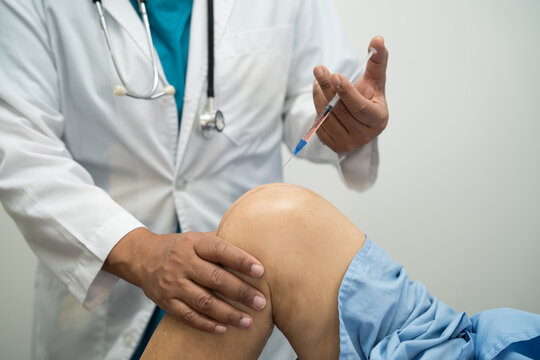
Arthritis is a common condition that causes inflammation and stiffness in the joints, leading to pain and reduced range of motion. One of the most commonly affected areas is the knee, which can significantly impact a person's ability to move and engage in daily activities. However, advancements in medical research and technology have led to new treatment options that can help manage knee arthritis more effectively.
One of the latest advances in the treatment of knee arthritis is the use of biologic injections. These injections contain substances that can help reduce inflammation and promote healing in the joint. One example is platelet-rich plasma (PRP) therapy, which involves injecting a concentrated dose of platelets from the patient's own blood into the knee. The platelets release growth factors that can stimulate tissue repair and reduce pain. Another biologic injection that has shown promise is stem cell therapy, where stem cells are injected into the knee to help regenerate damaged tissue and reduce inflammation. These treatments offer a more natural and targeted approach to managing knee arthritis symptoms.
In addition to biologic injections, another innovative treatment option for knee arthritis is viscosupplementation. This involves injecting a gel-like substance called hyaluronic acid into the joint to improve lubrication and cushioning. Hyaluronic acid is a natural component of joint fluid, and by supplementing it in the knee, it can help reduce pain and improve mobility. Viscosupplementation has been shown to be particularly effective for patients with mild to moderate knee arthritis who have not responded well to other treatments.
For more severe cases of knee arthritis, surgical intervention may be necessary. One of the latest advancements in knee surgery is the use of robotic-assisted techniques. Robotic-assisted knee replacement surgery allows for more precise and accurate placement of the implant, resulting in better long-term outcomes for patients. The robotic system provides real-time feedback to the surgeon, helping them make adjustments during the procedure to ensure optimal alignment and stability of the new joint. This technology has been shown to improve the longevity of knee replacements and reduce the risk of complications.
Another surgical option for knee arthritis is osteotomy, where the surgeon reshapes the bones around the knee to shift weight off the damaged area. This procedure can help correct alignment issues and reduce pressure on the arthritic part of the joint. Osteotomy is often recommended for younger patients with localized knee arthritis who want to delay or avoid a total knee replacement. By addressing the underlying biomechanical issues, osteotomy can help improve function and delay the need for more invasive procedures.
Physical therapy and exercise are also essential components of a comprehensive treatment plan for knee arthritis. In recent years, there has been a growing emphasis on personalized exercise programs tailored to the individual needs of patients with knee arthritis. Physical therapists can work with patients to develop strengthening and stretching exercises that target specific muscle groups around the knee, helping to improve stability and reduce pain. Additionally, low-impact activities such as swimming and cycling can help maintain joint mobility without putting excessive stress on the knee.
Overall, the latest advances in the treatment of knee arthritis offer new hope for patients looking to manage their symptoms and improve their quality of life. From biologic injections and viscosupplementation to robotic-assisted surgery and personalized exercise programs, there are a variety of options available to help address the underlying causes of knee arthritis and alleviate pain. By working closely with healthcare professionals to develop a tailored treatment plan, patients can find relief and restore function to their knees, allowing them to stay active and engaged in the activities they love.